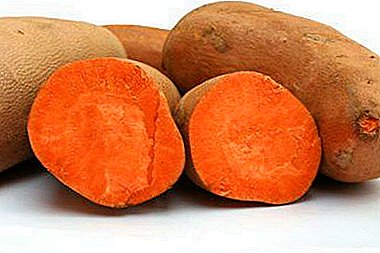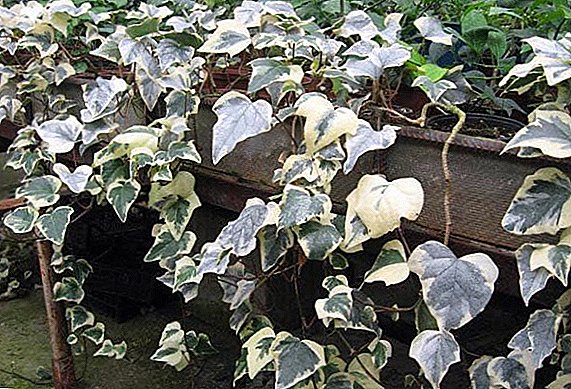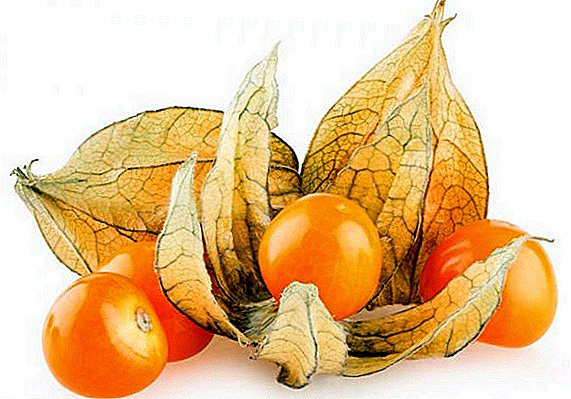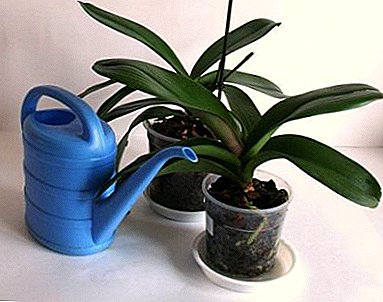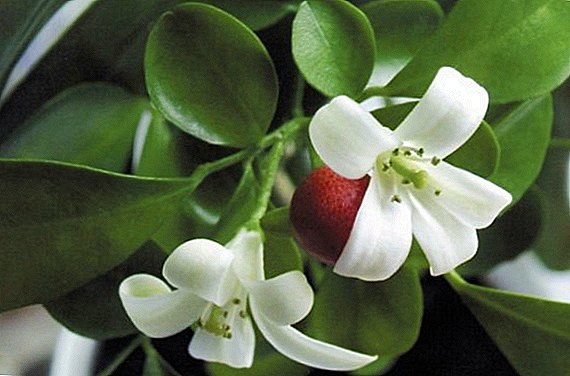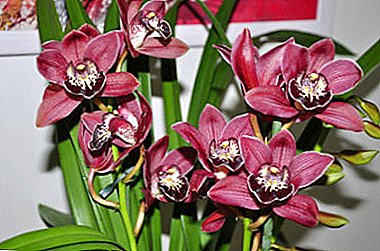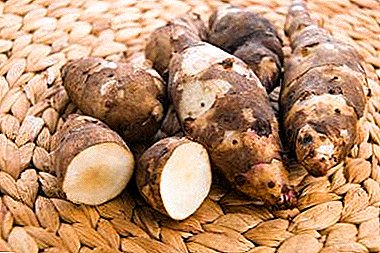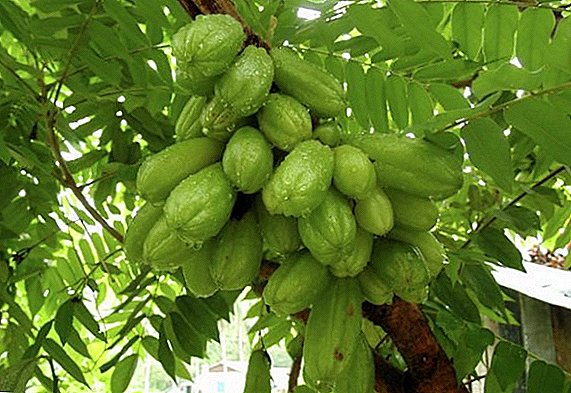 Few have heard of such a plant as bilimbi, while often consuming its fruit for dry seasoning.
Few have heard of such a plant as bilimbi, while often consuming its fruit for dry seasoning.
Let's find out what it is and where it occurs.
What is bilimbi and where does it grow
Bilimbi is a short-stem deciduous plant of the Sour family. It is also called cucumber tree. Most often found in warm tropical countries such as Indonesia, Thailand, India, Sri Lanka, Tanzania, etc. Malaysia is considered to be their homeland. 
Did you know? Some African tribes consider bilimbi sacred and use it in local rites..Bilimbi grows up to 10 m in height. It has complex green leaves, which consist of 11-37 oval-shaped leaves. Their length reaches a maximum of 0.6 m.
The flowers of the plant have a pleasant aroma and consist of 5 petals. Color - crimson or yellow-green. They grow directly on the trunk or old branches.
The elliptical fruit has 5 ribs and a star-shaped calyx at the base. The maximum length is 10 cm. They grow in the form of grapes. The color of the unripe fruit is bright green, mature color is yellow-green, almost white. Immature pulp has a dense, firm, crunchy texture, and mature - jelly-like. 
Important! Some fruits hide inside up to 5 brown seeds.
Bilimbi in room culture
In nature, the plant grows well on poor soil, but only nutritious soil that holds moisture well is suitable for indoor cultivation: leaf humus, turfy ground, peat, sand - all in equal shares.
In nature, bilimbi accumulates moisture in the trunk, so it can easily survive drought. In winter, the air temperature should not fall below +18 ° C.
In the vegetative period, the plant requires abundant watering. In winter, the frequency of water application to the soil should be reduced, preventing it from drying out. It is also recommended to spray the tree with warm water at room temperature, so that it feels as natural as possible.
Top dressing is done every 10 days with complex mineral fertilizer diluted in water. These manipulations are allowed exclusively during the growing season. 
Lovers of exotic plants will certainly be interested to learn how to grow a banana tree, pomegranate, annona, nerteru, love tree, calamondin, hymenocallis at home.
The crown is beautifully shaped by trimming:
- sanitary - to remove weak and crooked shoots, as well as any reasons for the thickening of the crown;
- Forming - to create an aesthetic form of the crown.
Bilimbi breeding
Bilimbi is a tree that loves bright, diffused natural light, but can tolerate a shadow. The optimum temperature for its cultivation is from +22 ° C to +35 ° C.
Important! Do not allow sudden temperature changes.The plant loves steadily high humidity (75%). Moreover, spraying in this case is more effective, but the introduction of water into the soil is also necessary. Use water only at room temperature, thawed or rain.
The ideal soil is a fertile sandy or clayey structure. Presence of organic remains is desirable.
Bilimbi can be propagated in two ways:
- seeds;
- cuttings.
Seed propagation
This method involves the use of fresh seeds from the fruit. The maximum shelf life is 2 weeks. It is best to place the seeds in distilled water. This manipulation will keep the likelihood of their germination at the proper level. The storage location should be dark and the optimum temperature should be +30 ° C.  Seeds in bilimbi fruits. Planting is done in peat cups or mini-greenhouses with peat or peat tablets. The substrate should be wet at the time of landing. It is very important to maintain the air temperature at +28 ° C and humidity of 75%. After the first shoots appear, the plant can be moved directly to the peat cups to a permanent place in the prepared pot. During the formation of the cucumber tree is recommended to maintain greenhouse conditions.
Seeds in bilimbi fruits. Planting is done in peat cups or mini-greenhouses with peat or peat tablets. The substrate should be wet at the time of landing. It is very important to maintain the air temperature at +28 ° C and humidity of 75%. After the first shoots appear, the plant can be moved directly to the peat cups to a permanent place in the prepared pot. During the formation of the cucumber tree is recommended to maintain greenhouse conditions.
Reproduction by layering
Reproduction by cuttings occurs in the spring. It was during this period that you can take a stalk from an old tree. Rooted cuttings immediately in wet soil (sand or peat-sand substrate). Additionally, you want to wrap the future tree and hide in a warm place at the time of rooting.
The first signs of growth are the appearance of new buds and leaves. After that, they immediately transplant into prepared pots with nutrient primer.
Regarding air layers, it is necessary to bend the lower branch of an adult plant to the soil and pin it down. After the appearance of the roots, this branch is separated from the "mother" and transplanted into a separate container.  Tree planting rules
Tree planting rules
The plant requires regular transplantation - three times a year. In this case, the pot should be every time more and more. The soil is used slightly acid. Drainage is a must.
The tree is carefully removed from the previous container, without breaking the ground, so as not to damage the root, and placed in a new container on a cushion of drainage material. Top root sprinkled with earth, watered and sprayed the plant with warm water.
Fruits of the cucumber tree
Fruits, which gives the cucumber, very useful. They are rich in vitamins and minerals, have a sour taste.
The nutritional value
100 g of fruit contains only 40 kcal, of which:
- 2 kcal of proteins (0.61 g);
- 3 kcal of fat (0.3 g);
- 24 kcal of carbohydrates (6 g).
- phosphorus (P);
- calcium (Ca);
- iron (Fe);
- potassium (K).
Useful and harmful properties of the fruit
 Useful properties of the product:
Useful properties of the product:
- Strengthening immunity.
- Increase the strength and improve the condition of bones, nails and teeth.
- Improved vision.
- Maintaining stability of the cardiovascular system.
- Treatment of skin rashes, tumors, as well as getting rid of itching.
- Reducing pain in rheumatism.
- Elimination of inflammatory processes in the body.
- Normalization of the chair.
- individual intolerance to the product or any of its components;
- renal failure;
- increased acidity.
Application of fruits
Bilimbi fruits are mainly used for the preparation of various dishes, as well as for household needs.
In cooking
In its pure form, the fruit is practically not consumed because of its sour taste, but is used in the composition of beverages and marinades. Unripe fruits can be a good addition to rice, bean, fish and meat dishes. Most often, dried bilimbi is part of the curry seasoning.  To use the fruit for making jam, you need to get rid of the acid. To do this, soak them in salt water and boil with plenty of sugar. Already in this form, the fruit can be used for making dessert, jam, jam, etc.
To use the fruit for making jam, you need to get rid of the acid. To do this, soak them in salt water and boil with plenty of sugar. Already in this form, the fruit can be used for making dessert, jam, jam, etc.
In the household
These fruits are widely used in the household:
- For the preparation of fabric whitening agents, which can also be used to clean various surfaces and rub the products made of brass and silver.
- Their juice is added to the soap or used in its pure form to clean the skin.
- Juice can be used to clean wounds as a disinfection.
- From the fruit you can make a decoction of cough, pain in the joints, diarrhea and other ailments.
Did you know? Because of its ability to retain moisture, the bark of the cucumber tree becomes soft and juicy, therefore it is used by drought farmers to feed livestock.Bilimbi is a unique plant, a storehouse of vitamins and minerals. Its fruits can be consumed with the purpose of losing weight because of their low calorie content. It is not necessary to go to the tropics for the cucumber tree, it is easy to grow it at home from the seeds of fruit. The main condition is to maintain the optimum temperature and humidity.


